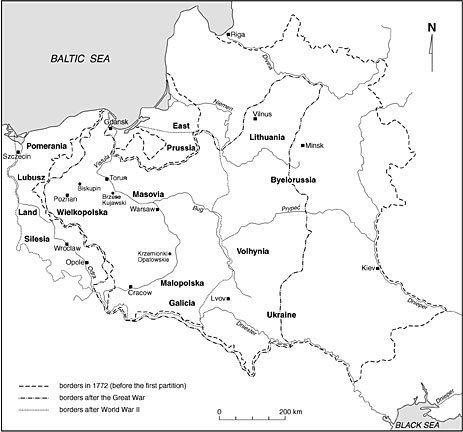

 | Page 1038 |  |
high—was discovered in the Ukrainian River Zbrucz. Since then the Światowid has been considered the symbol of Slavdom.

Poland, showing changing borders: (1) 1772, before the first partition; (2) 1918, after World War I; and (3) 1945, after World War II
The well-known historian, geographer, and numismatist Joachim Lelewel (1786–1861) mentioned archaeology as a subdiscipline of historiography. For the first time variation among archaeological material was acknowledged, and issues of chronology, imports, and regional differences were recognized. This laid the foundations of later regional studies. Archaeological monuments were seen as sources of knowledge about the past, and hence the need to collect and describe them was emphasized.
The dynamic development of the study of antiquity was interrupted by the collapse of the November Uprising in 1831 and the resulting Russian repressions. Conditions favorable to the study of antiquity emerged under Prussian occupation, particularly in Wielkopolska as well as in the Vilna region. Papers on the antiquity and prehistory of the Slavs were published in Przyjaciel Ludu, one of the first Polish illustrated magazines, founded in Leszno in 1834. In this magazine in 1843, Wojciech Morawski published an article that used c. j. thomsen’s and Lisch’s three-age system.
In 1840 in Szamotuły (in the Wielkopolska region), on the initiative of Jedrzej Moraczewski, the Society of the Gatherers of Native Antiquities was founded as the first prehistoric society in Poland. Its goals were to collect